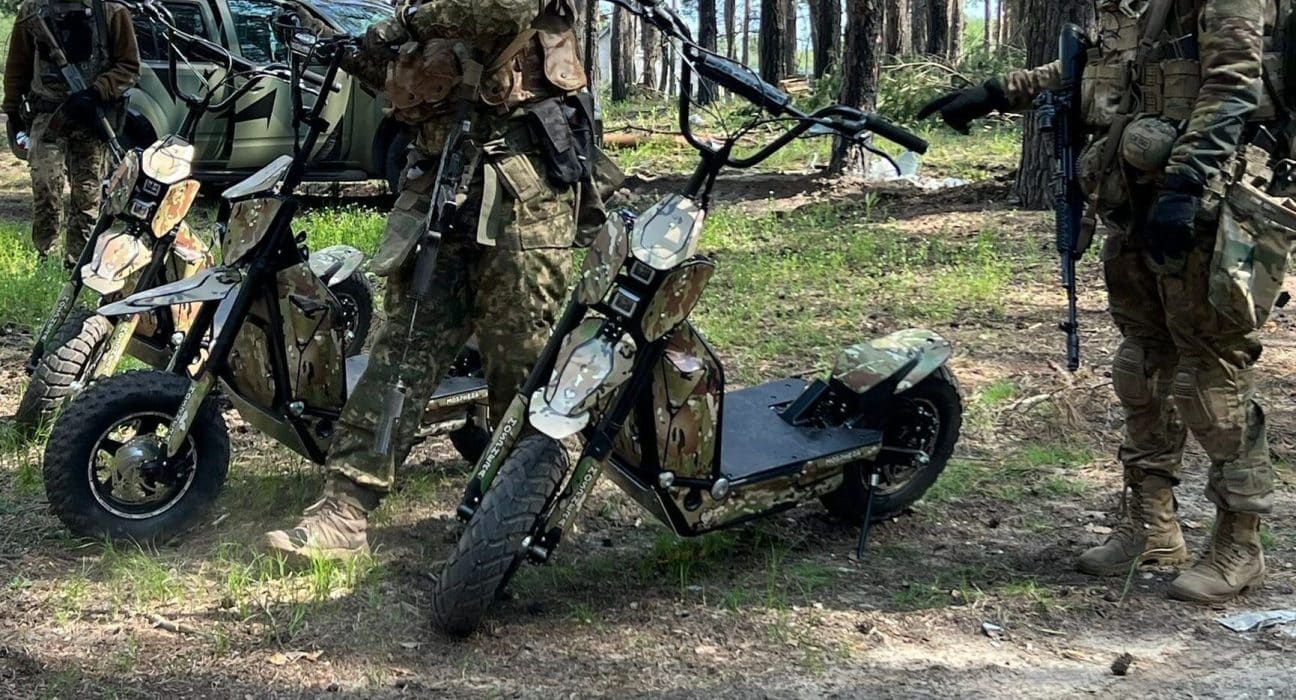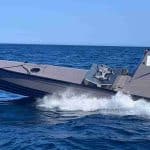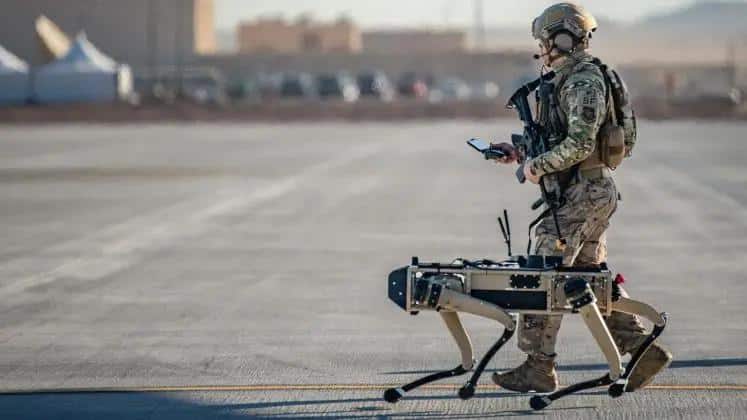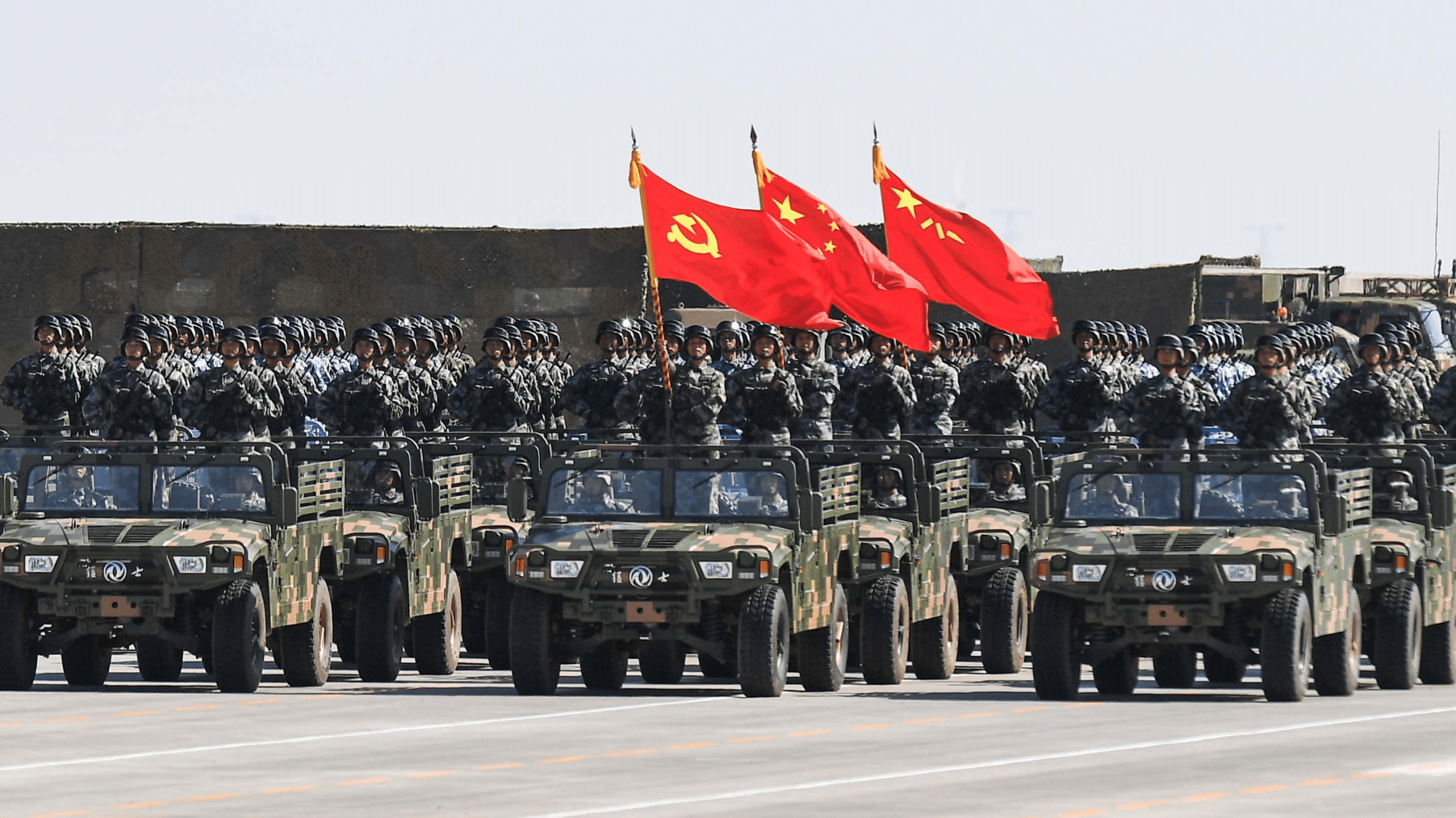As the Russian-Ukrainian conflict has intensified since February 2022, one of the most significant changes has been the rapid evolution of means of transport for people on the battlefield. While using traditional mechanized transport, this war has seen the rise of light, agile, often civilian and modified means of transport, which are redefining mobility at the front.
The silent war: electric bikes and motorbikes
Since 2023, the Ukrainian front lines have seen the emergence of an improvised fleet of electric bicycles and motorbikes, used mainly for reconnaissance operations, infiltration and the deployment of kamikaze drone pilots.
The Delfast electric bicycle, originally designed for urban delivery, has been adopted by the Ukrainian forces for its acoustic stealth, low heat signature and ability to slip through wooded or destroyed terrain. This discreet system enables drone operators to approach enemy lines without alerting the enemy, particularly at night.
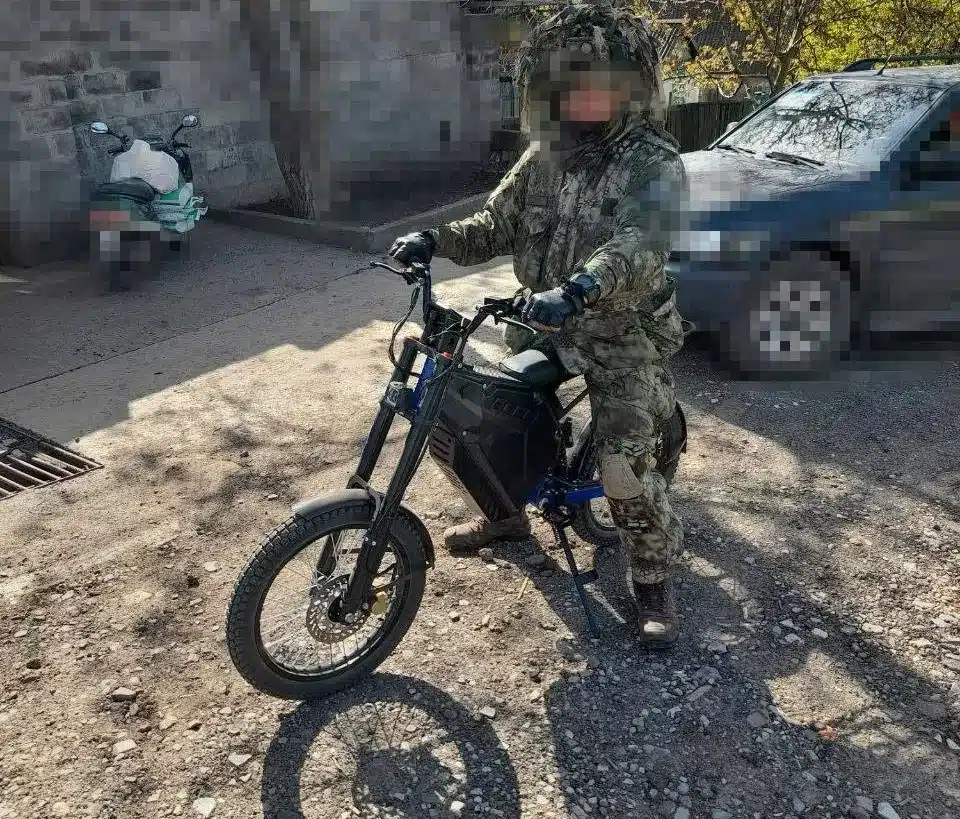
Civilian pick-ups: the weapon of volunteers
Another emblematic image of the conflict is the militarised civilian pick-up. Widely distributed through donations from civilians, NGOs and the diaspora, they are a logistical mainstay for small Ukrainian units, including assault groups, territorial forces and drone units.
Toyota Hilux, Ford Ranger and Mitsubishi L200 pick-ups are modified by hand, adding rudimentary armor plating, portals for collective weapons and camouflage netting.
These vehicles offer immediate tactical mobility at low cost, often faster and more discreet than conventional armored vehicles, but at the price of poor ballistic protection.
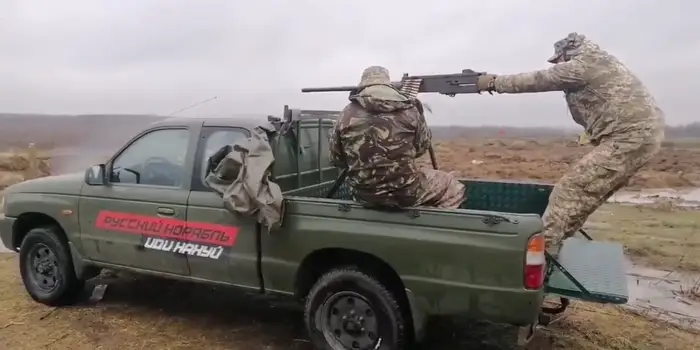
Military buggies and off-road mobility
Light military buggies have been integrated into special operations and deep reconnaissance actions. Manoeuvrable, fast and air-transportable, these vehicles are particularly well suited to rugged terrain or rapid actions with a small logistical footprint. Their use is similar to that of Western special forces: raids behind Russian lines, sabotage, infiltration and extraction.
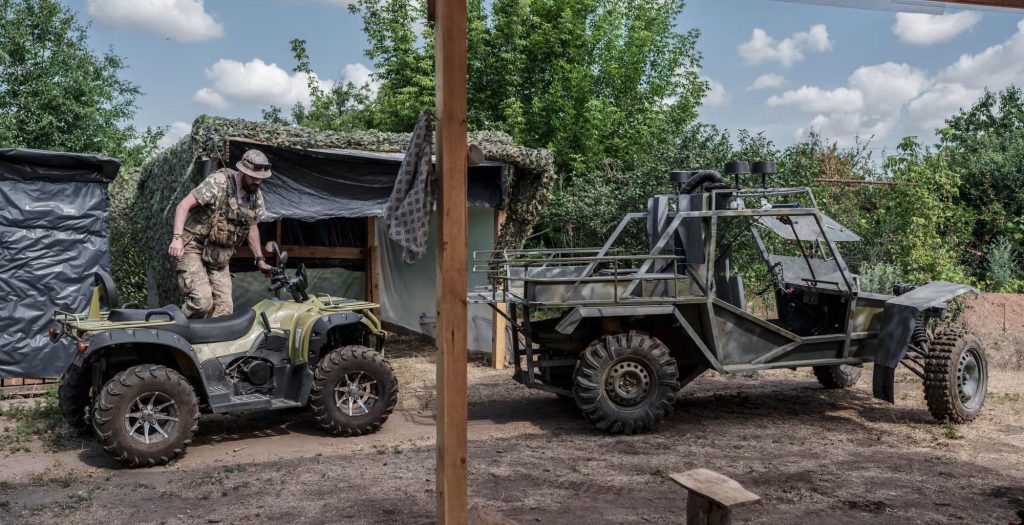
River warfare: light and fast boats
The Dnieper has become an active theater of Ukrainian micro-infiltration. Inflatable boats, modified jet-skis and fast boats are used to cross the river discreetly, often at night, in order to set up bridgeheads or carry out sabotage actions on the bank occupied by Russian forces.
This type of transport was part of a flexible and unpredictable harassment strategy, in contrast to the massive confrontations at the start of the war.
Improvised vehicles: creativity under constraint
Finally, a notable phenomenon is that of improvised vehicles: vans or even small civilian cars adapted as tactical means of transport. These solutions fill logistical gaps, particularly for medical evacuation or transport in urban areas.
This militarization of civilian life reflects the extreme hybrid of the conflict, where the boundary between combatant and civilian becomes blurred even in the means of locomotion.
A war on a human scale
The Russian-Ukrainian conflict marks a break in the recent history of military mobility. The end of the supremacy of heavy armored vehicles on all types of terrain is coupled with a return to light, fast, stealthy and adaptable mobility, designed for small, autonomous and agile groups.
This ‘high-tech small-scale warfare’ is a form of tactical intelligence in which every means of transport, however modest, becomes a force multiplier.

